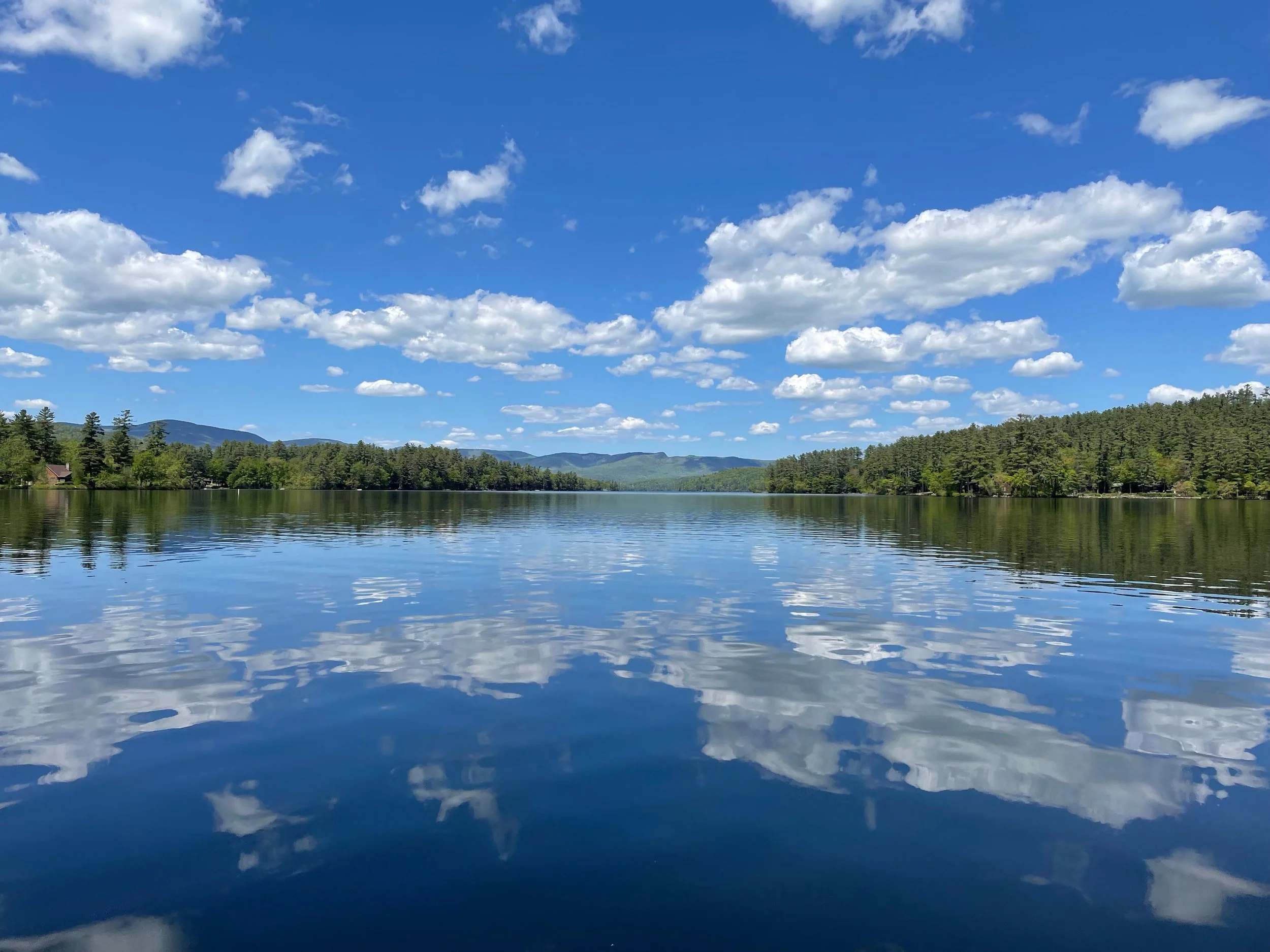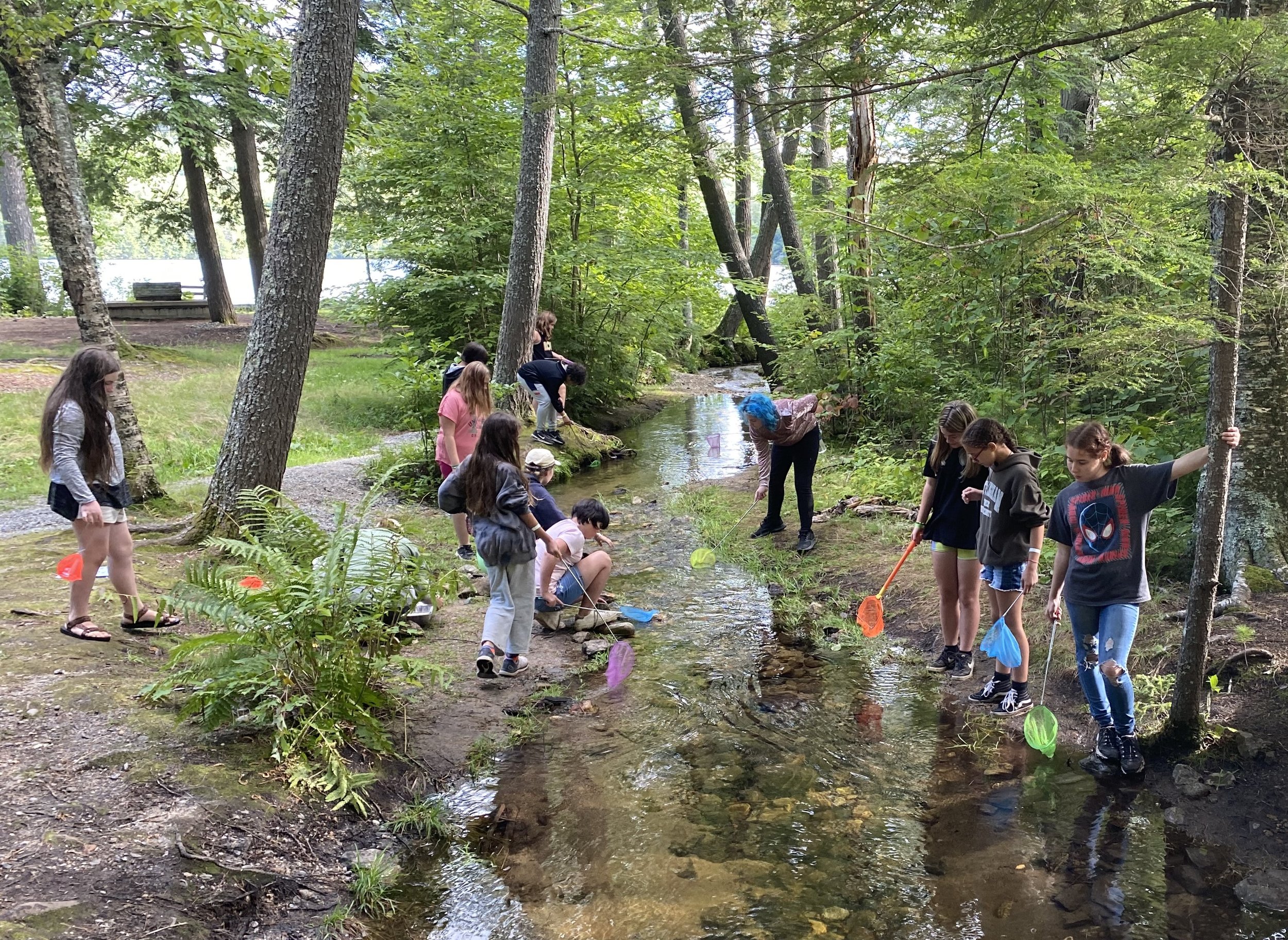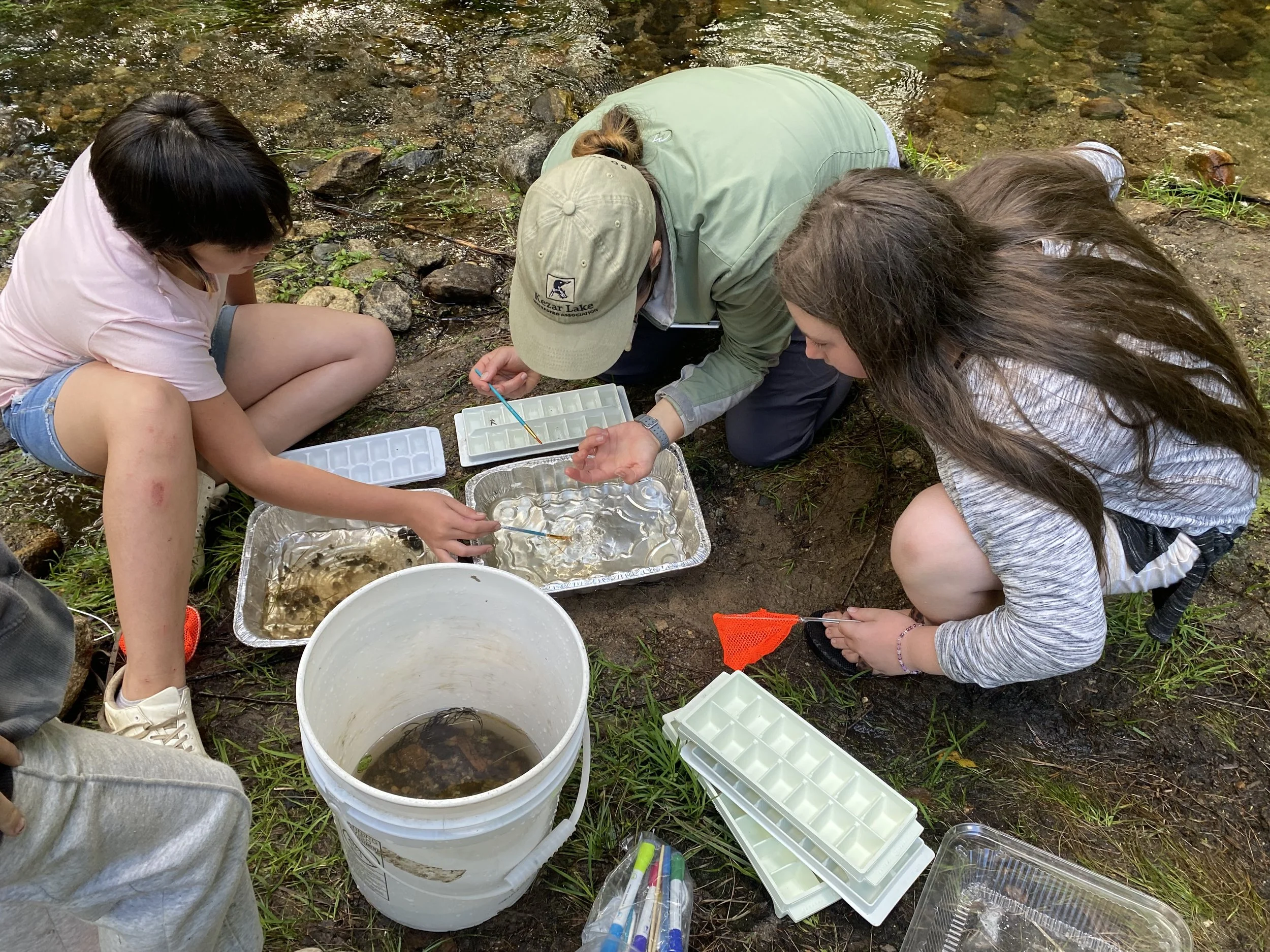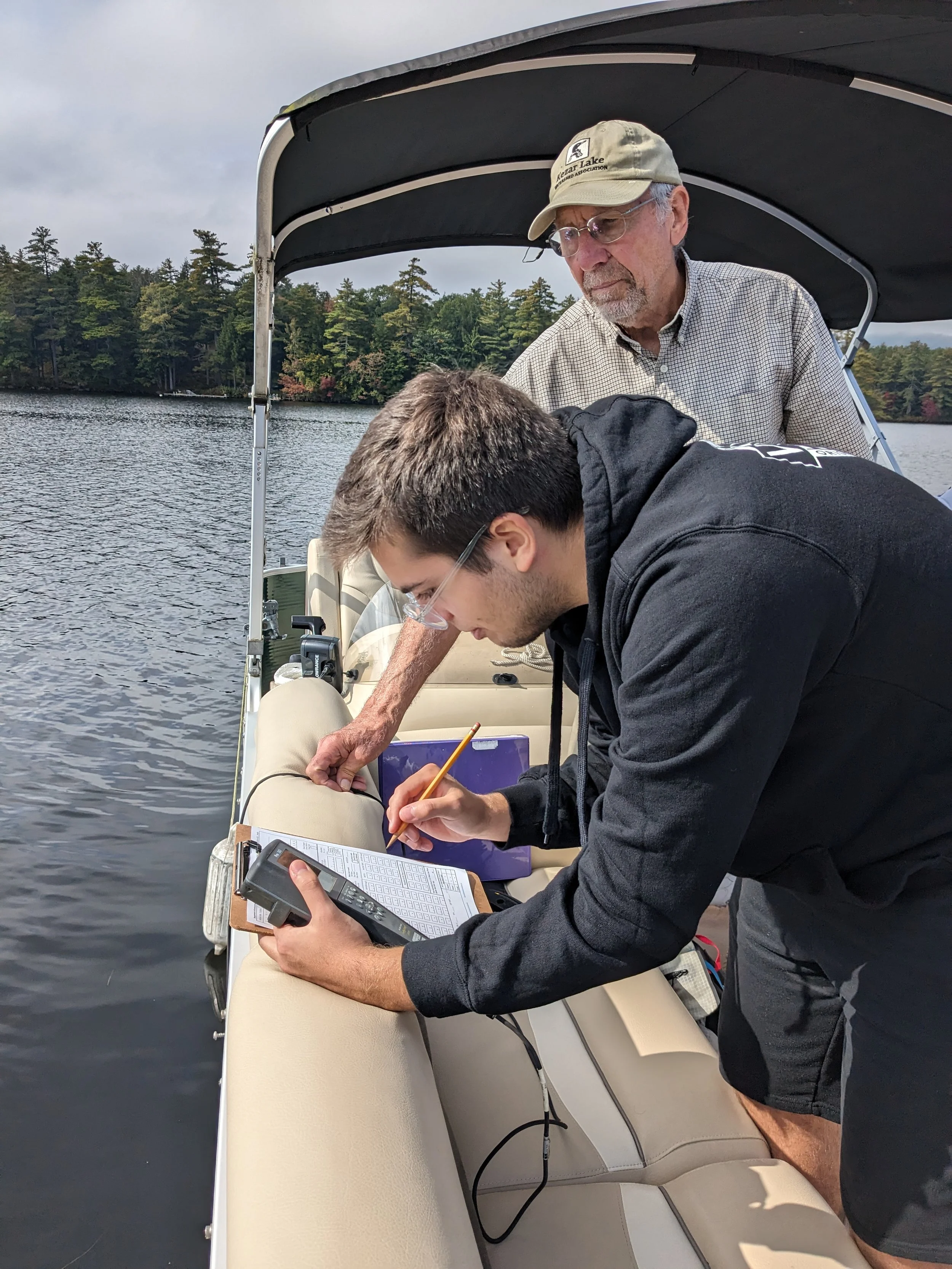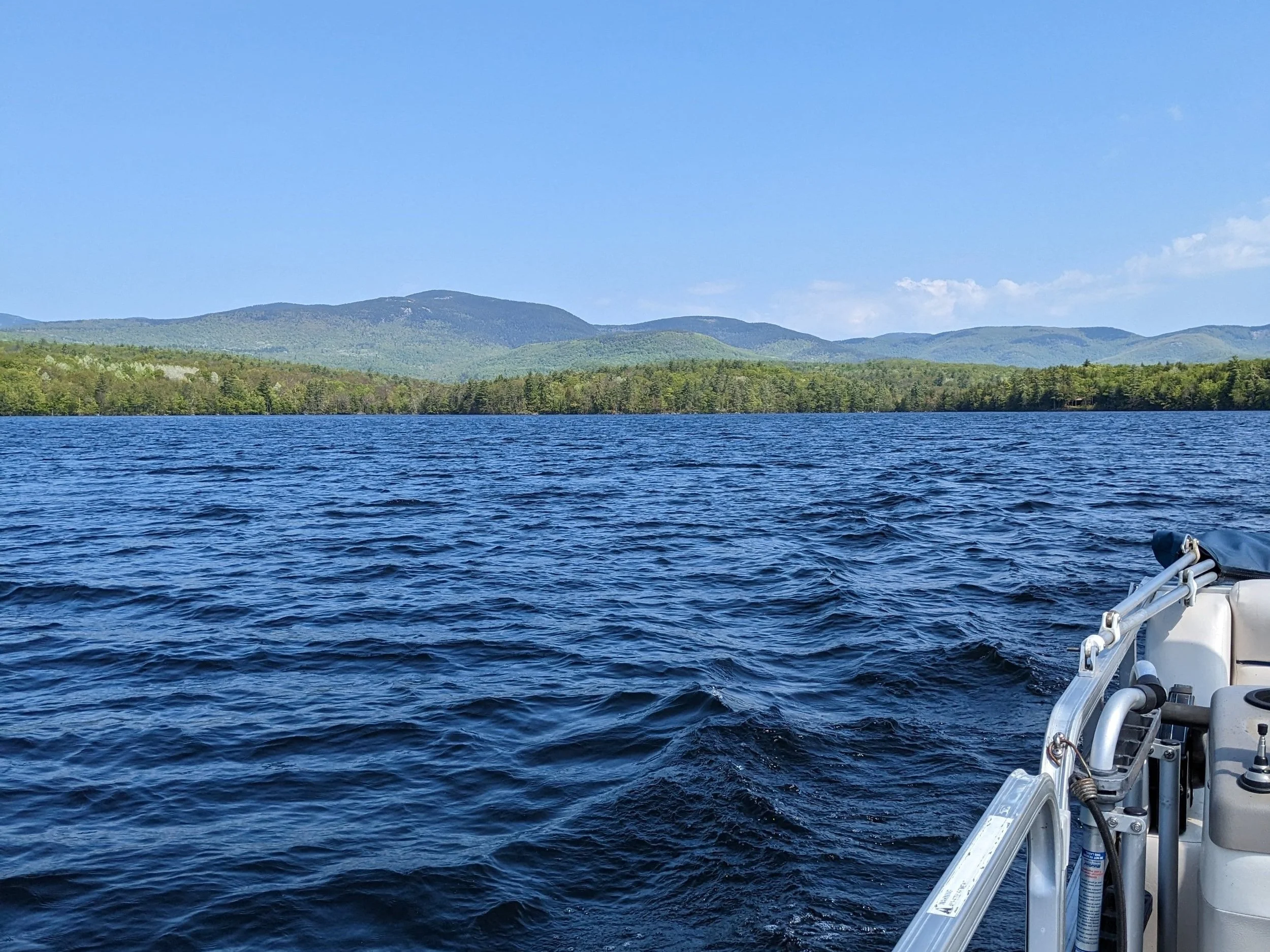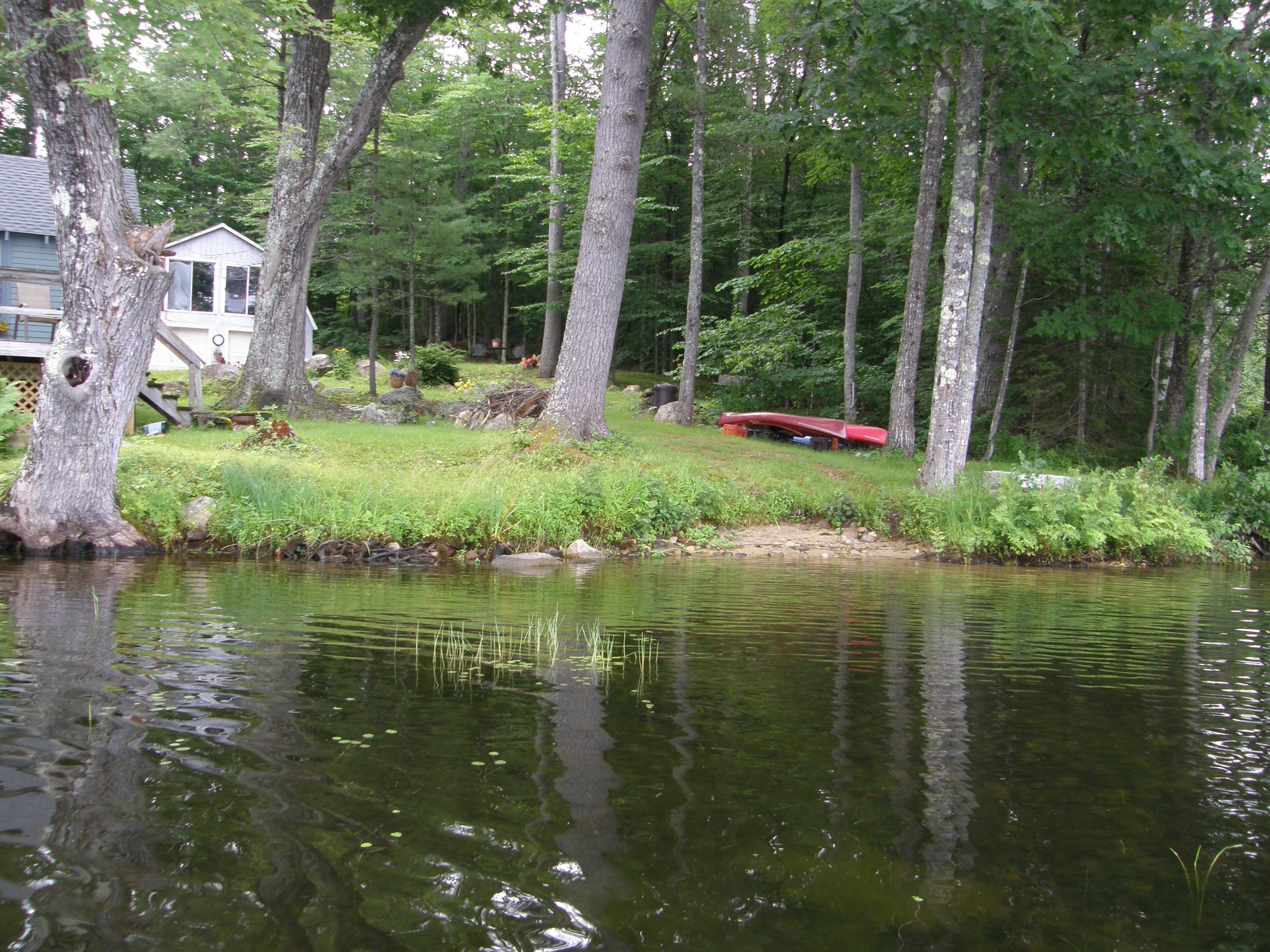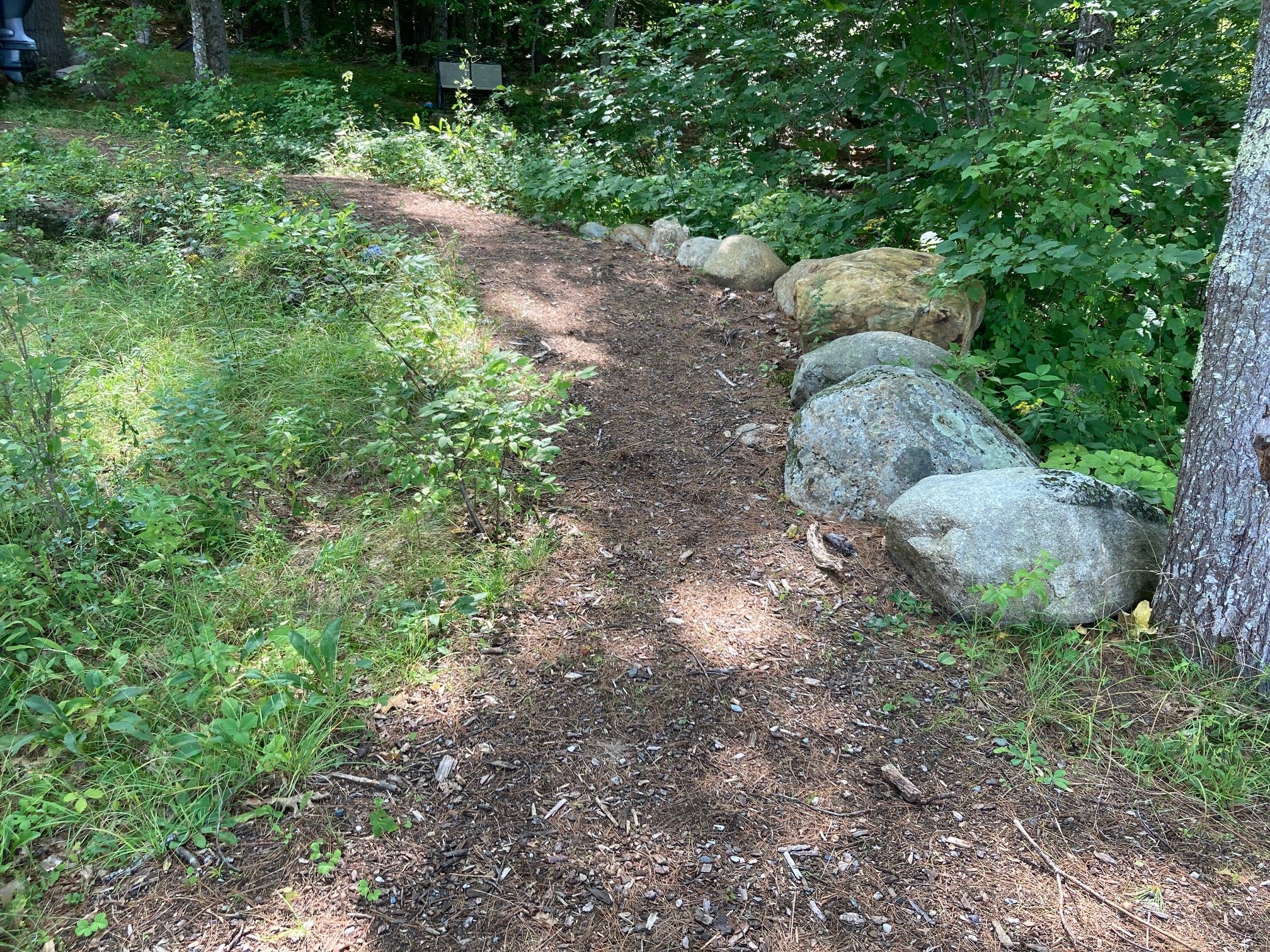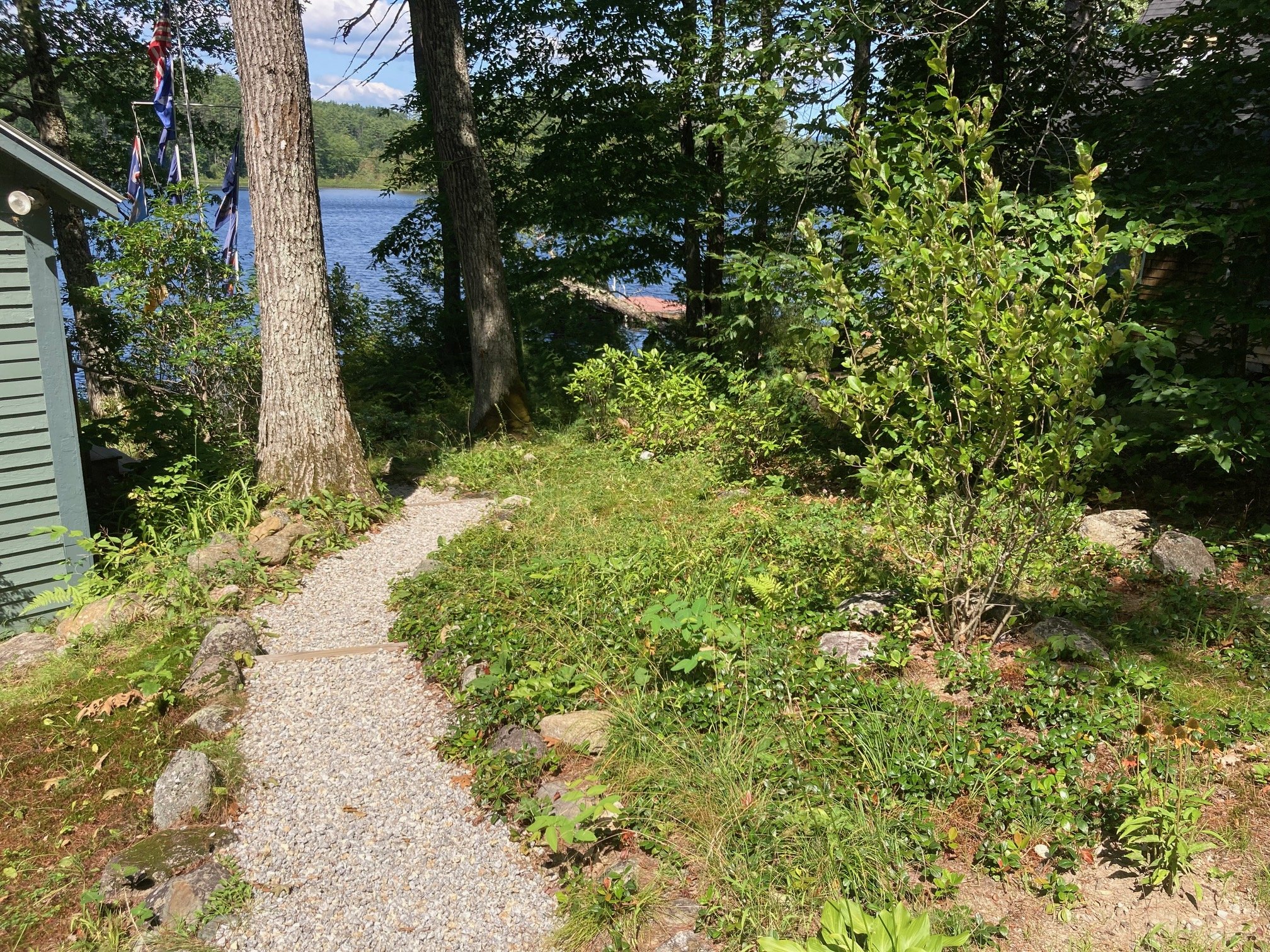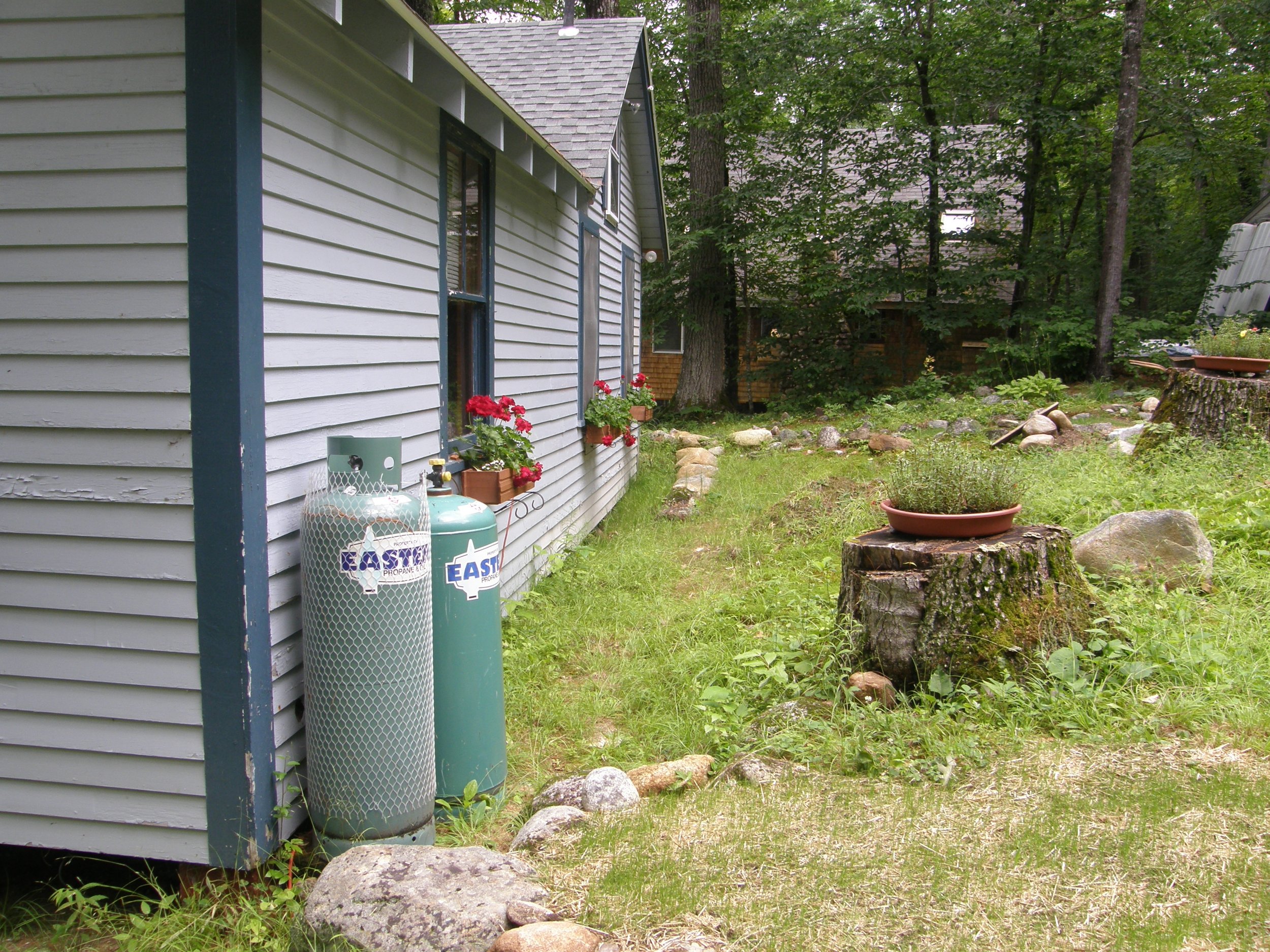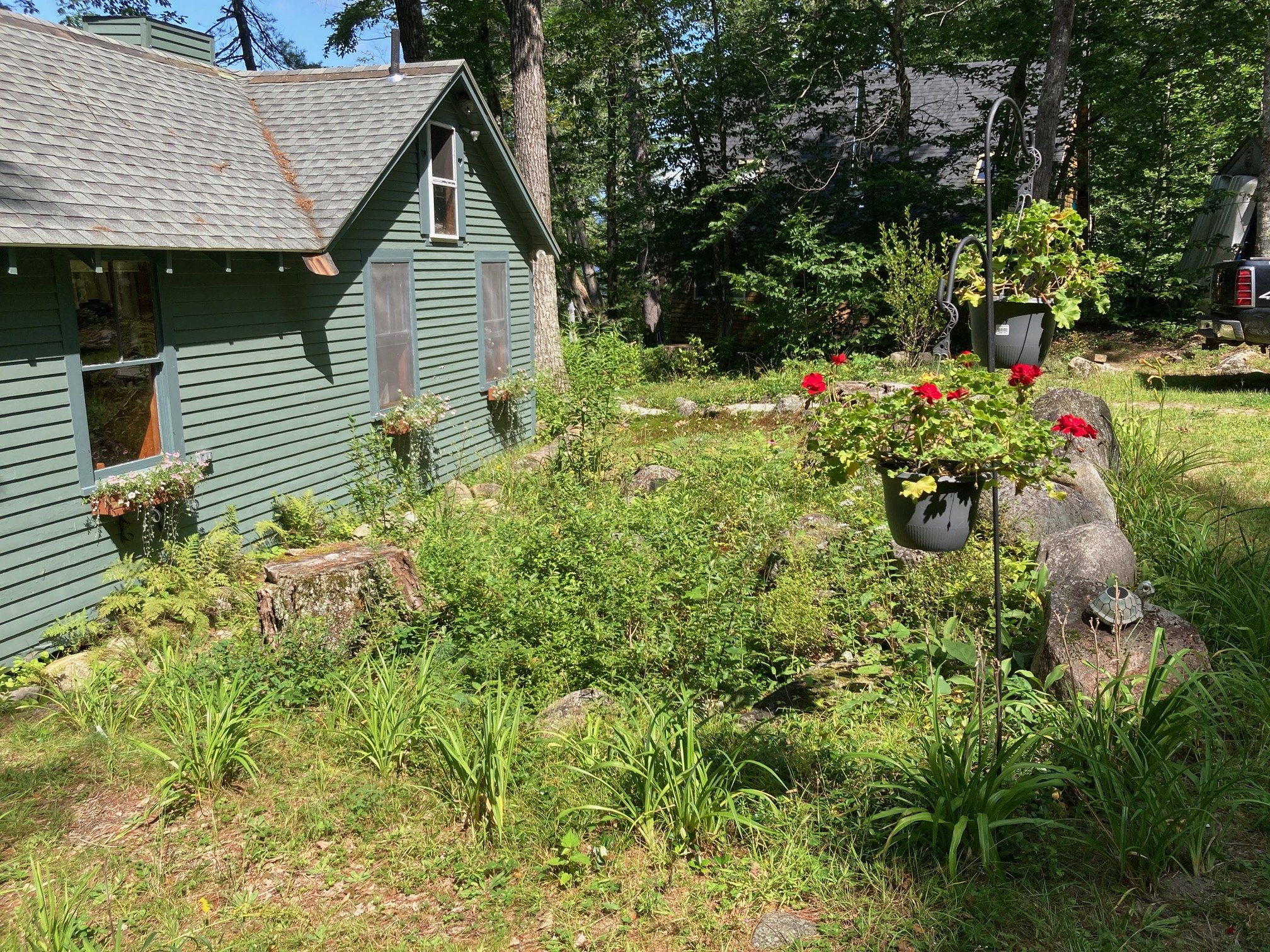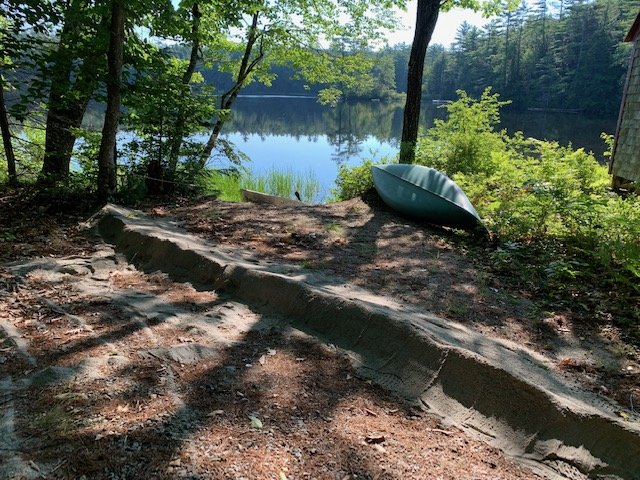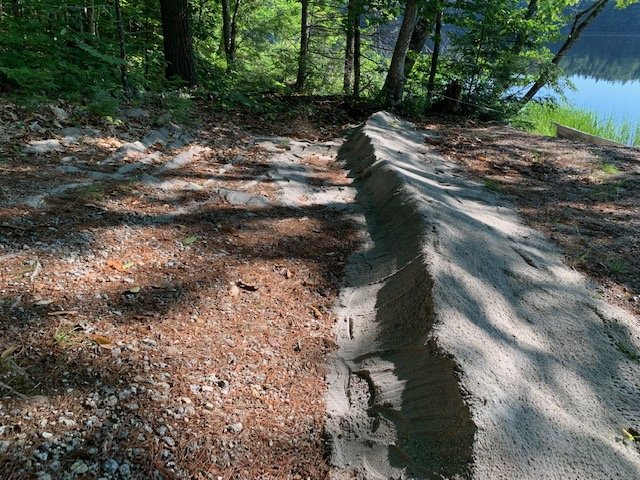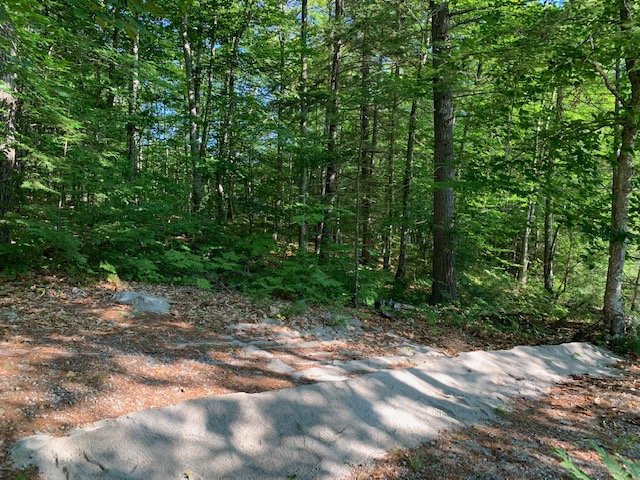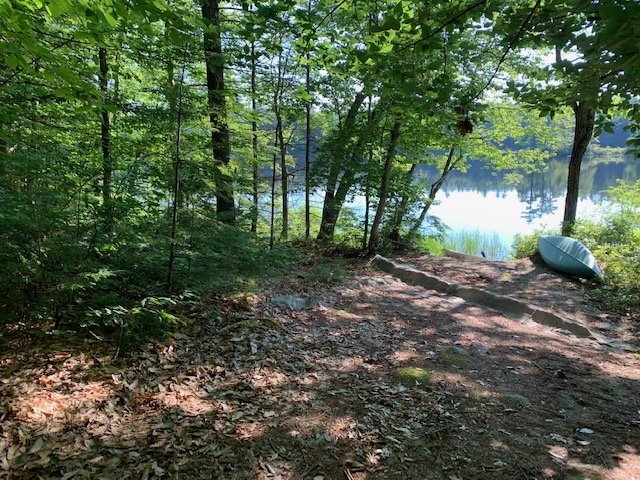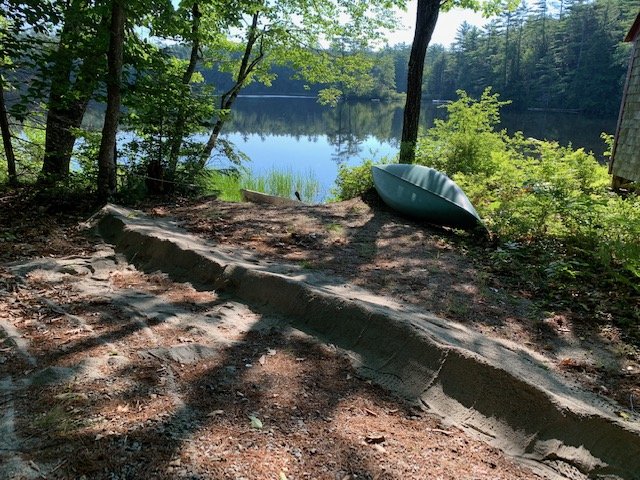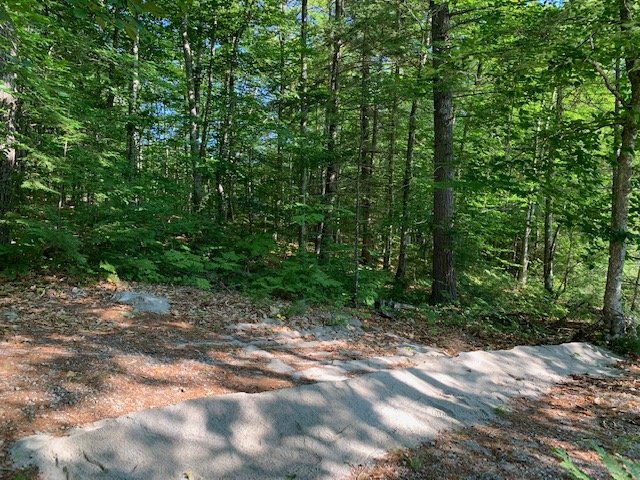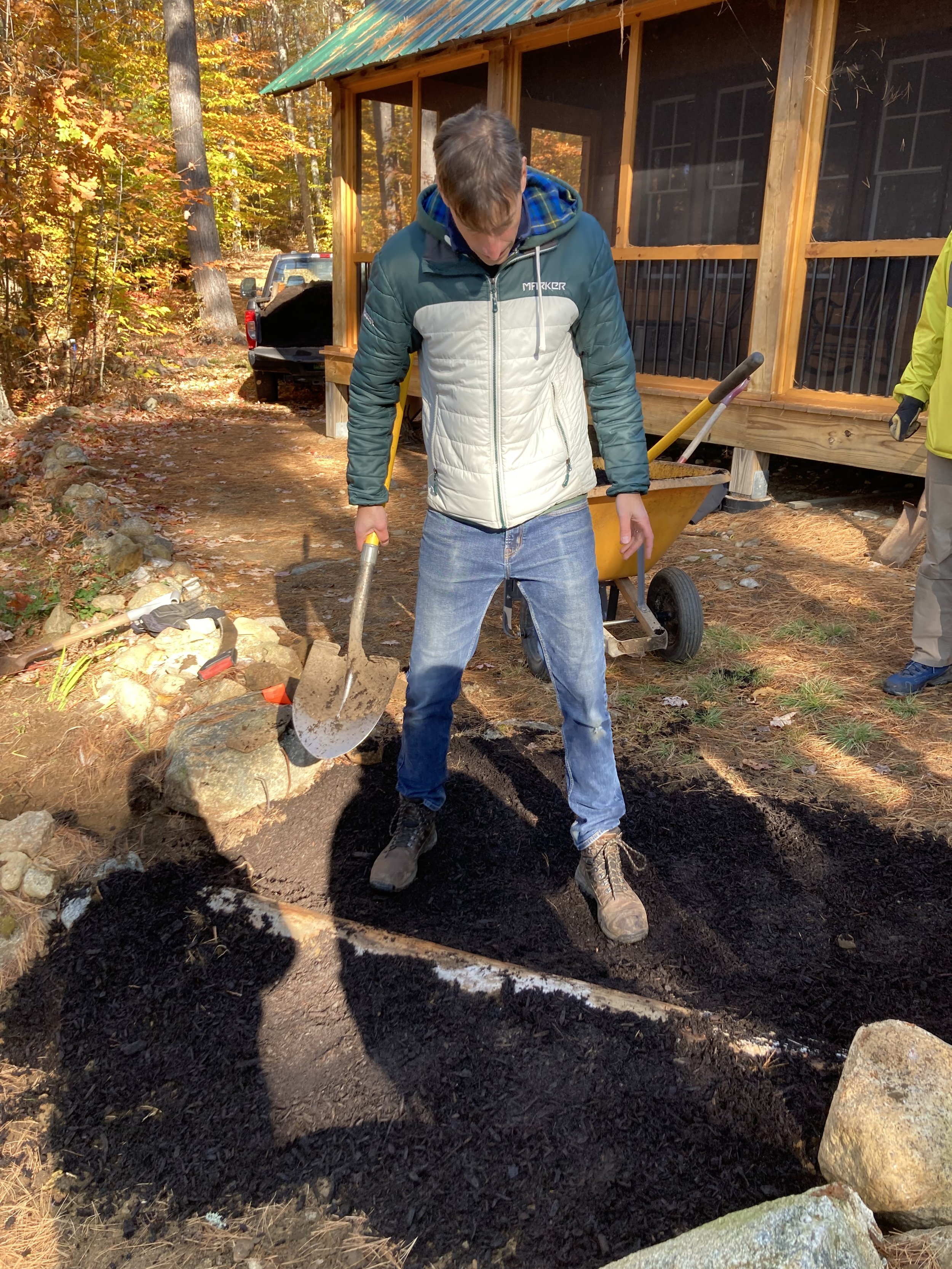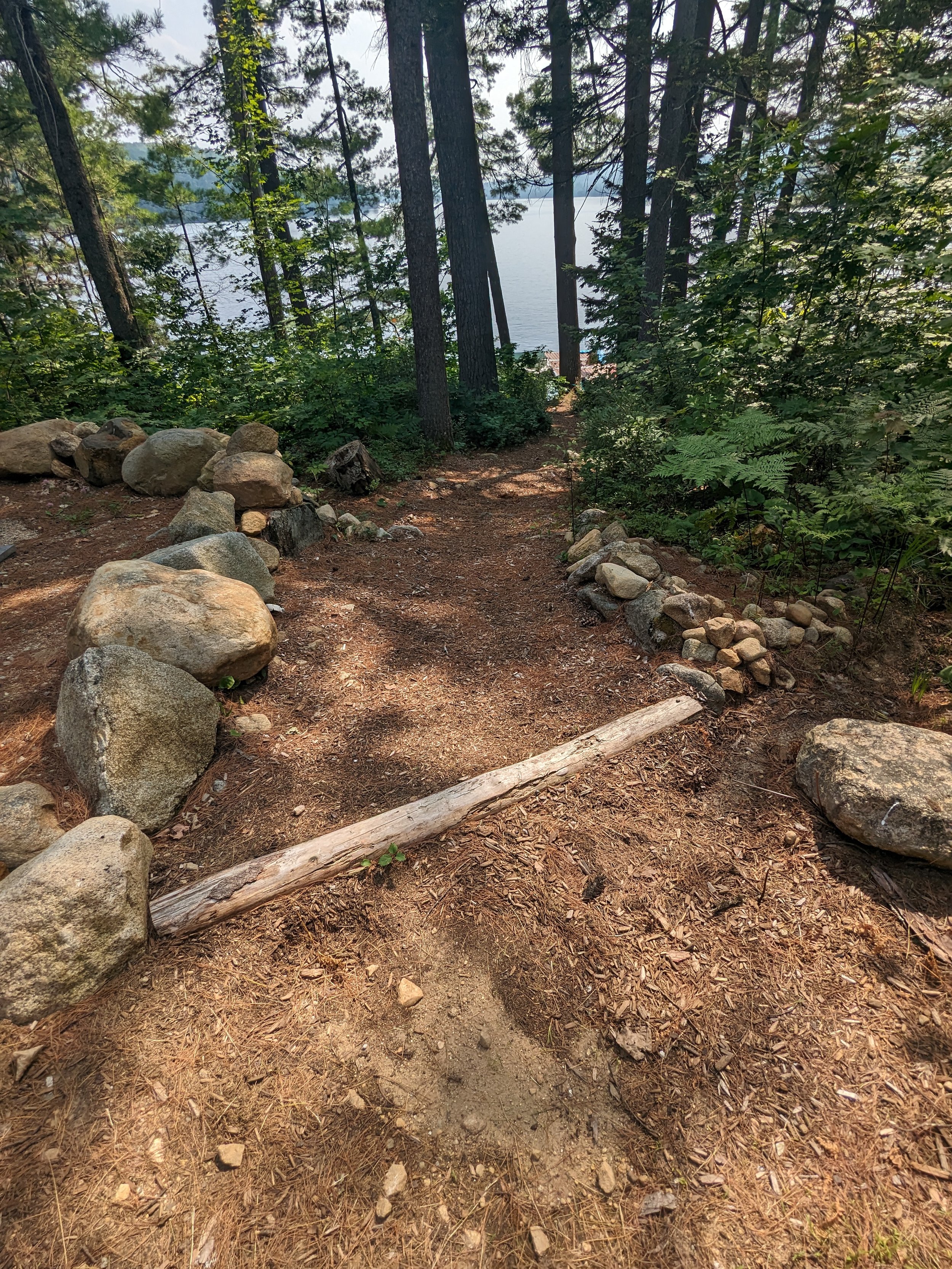Students search for benthic macroinvertebrates at Camp Susan Curtis during a KLWA lesson.
On a crisp and sunny morning in early October a group of Fryeburg Academy ninth graders got their first look at benthic macroinvertebrates – by visiting a pond right on their campus. This class was one of four Fryeburg Academy classes our Outreach Manager visited this fall to provide hands-on water quality lessons. We were also busy with kids earlier this summer at Camp Susan Curtis (pictured above). During a KLWA lesson, campers created mini watersheds and collected macroinvertebrates. We determined that Trout Pond is fed by a healthy stream and had a great time with the kids!
Campers classify macroinvertebrates and learn which are sensitive to poor water quality.
We also got several groups out onto Kezar Lake. In addition to hosting a few free pontoon boat rides in August, we took a group of Fryeburg Academy research students out on Kezar this fall to sample water quality. The group sampled dissolved oxygen, took water clarity readings with a Secchi disk, and encountered a most memorable raft of twelve loons!
Board member Heinrich Wurm teaches a Fryeburg Academy student how to measure dissolved oxygen.
The Fryeburg Academy crew in good spirits after a sunny afternoon of water sampling.
KLWA membership contributions support our education and outreach. Thanks to each of you for your ongoing support as we work to engage and educate future generations of water stewards.
By Emlyn Emerock and Wendy Molin

